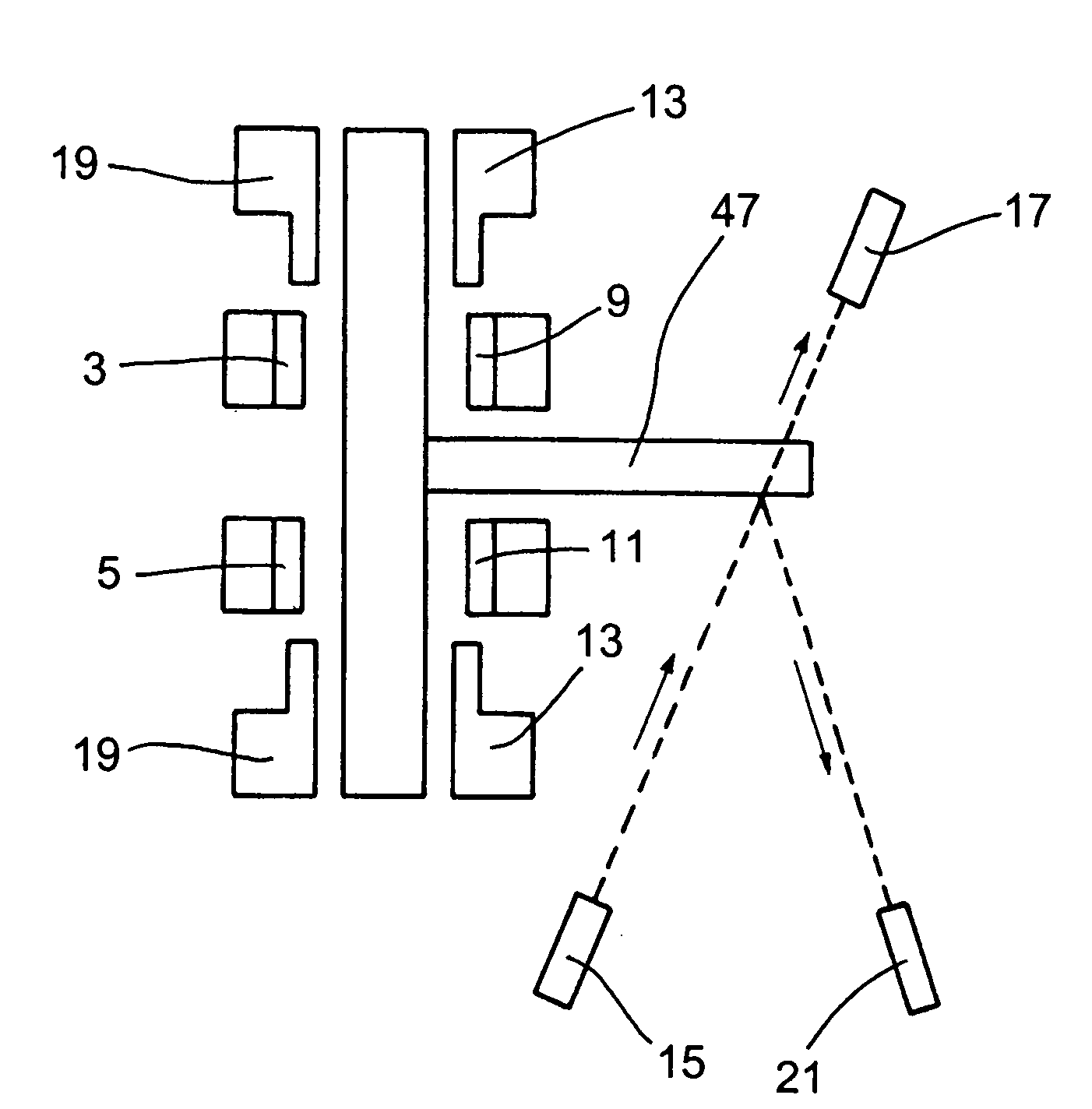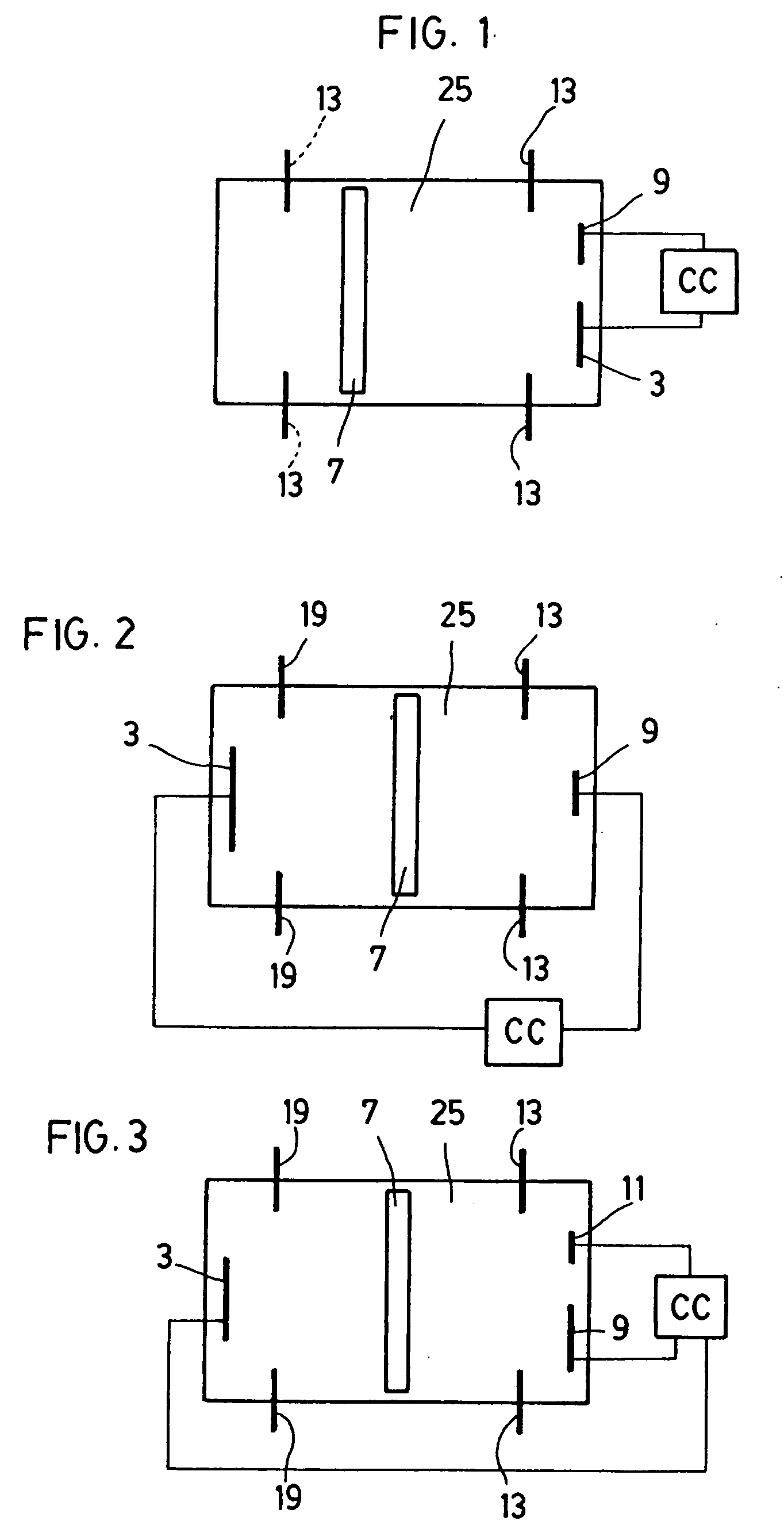Miniature electro-optic device and corresponding uses thereof
a technology of electro-optic devices and miniature surfaces, applied in the direction of micromechanical switches, gyroscopes/turn-sensitive devices, acceleration measurement using interia forces, etc., can solve the problems of reducing and impeding their advance, so as to improve the accuracy of miniaturisation techniques and reduce wear. , the effect of simple detection of switching tim
- Summary
- Abstract
- Description
- Claims
- Application Information
AI Technical Summary
Benefits of technology
Problems solved by technology
Method used
Image
Examples
Embodiment Construction
[0075]FIG. 1 shows a first basic functioning mode of an electro-optical device according to the invention. The electro-optical device defines an intermediate space 25 in which is housed a conductive element 7, which can move freely along the intermediate space 25, since physically it is a loose part which is not physically joined to the walls which define the intermediate space 25. The electro-optical device also defines a first zone, on the left in FIG. 1, and a second zone, on the right in FIG. 1. In the second zone are arranged a first condenser plate 3 and a second condenser plate 9. In the example shown in FIG. 1, both condenser plates 3 and 9 have different surface areas, although they can be equal with respect to one another. The first condenser plate 3 and the second condenser plate 9 are connected to a CC control circuit. On applying a voltage between the first condenser plate 3 and the second condenser plate 9, the conductive element is always attracted towards the right i...
PUM
 Login to View More
Login to View More Abstract
Description
Claims
Application Information
 Login to View More
Login to View More - R&D
- Intellectual Property
- Life Sciences
- Materials
- Tech Scout
- Unparalleled Data Quality
- Higher Quality Content
- 60% Fewer Hallucinations
Browse by: Latest US Patents, China's latest patents, Technical Efficacy Thesaurus, Application Domain, Technology Topic, Popular Technical Reports.
© 2025 PatSnap. All rights reserved.Legal|Privacy policy|Modern Slavery Act Transparency Statement|Sitemap|About US| Contact US: help@patsnap.com



